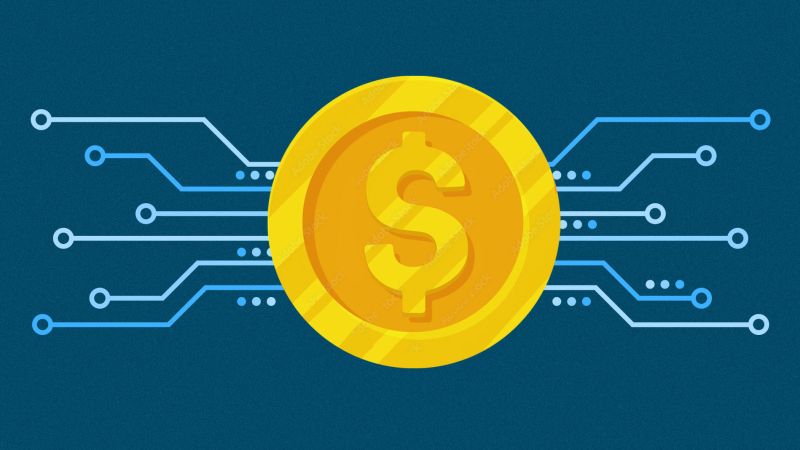The SEC’s crackdown on stablecoins has caused upheaval in the cryptocurrency world.
Centralized stablecoins account for 91.72% of the total market cap, and the recent actions
against Paxos and Binance have some worried about the implications for the crypto industry. As
a result, DeFi-based stablecoins are gaining attention as a potential solution.
These blockchain- based stablecoins are decentralized and not currently subject to the same regulatory scrutiny as centralized options. In this article, we’ll explore the top DeFi stablecoins poised to become the new standard for stability in crypto.
Types of Stablecoins
As true degens know, stablecoins come in three types: algorithmic (algo) that adjusts the token
supply via complex algorithms to maintain a stable price (DAI); crypto-backed, pegged to a
cryptocurrency, and backed by a reserve of that crypto (USDC); and fiat-backed, pegged to a
fiat currency, backed by a reserve of that currency (USDT). Each type has its own advantages
and disadvantages, with the choice often depending on a trader’s specific needs and risk
tolerance.
List of up and coming Defi stablecoins to look out for:
GHO
AAVE’s $GHO (pronounced “GO”) stablecoin has been launched on Ethereum’s Goerli testnet.
It’s fully decentralized, over-collateralized, and designed to maintain a fixed one-to-one
exchange rate with the US dollar.

Unlike other decentralized stablecoins, interest repaid by borrowers goes to the Aave DAO treasury instead of asset suppliers who are already earning interest on their collateral. The launch is subject to approval from the Aave DAO, which governs the Aave Protocol and $GHO. Holders of AAVE, the platform’s governance token, will have a say in determining $GHO’s supply, interest rate, risk parameters, and approving facilitators that can mint and burn $GHO tokens.
sUSD
sUSD is a decentralized stablecoin that tracks the price of the US dollar through Chainlink’s
oracle network, using smart contract-based algorithms and a network of participants. By
adjusting its supply in response to demand, sUSD aims to maintain a stable price.
Although it requires a high collateral ratio of 400% using SNX, sUSD is highly decentralized and integrated with many DeFi protocols. Some investors have considered it a better alternative to UST, as it operates similarly, and its value could rise if there are any issues with USDC and Circle.
crvUSD
The dollar-pegged crvUSD stablecoin, similar to other overcollateralized stablecoins, will be
available to users who deposit other crypto assets as collateral. crvUSD uses a unique lending-
liquidating AMM algorithm that protects borrowers whose collateral drops below the liquidation
price.
As the value of ETH used as collateral drops, the protocol will convert it to US Dollars and
vice versa when the price of ETH increases. This smooth swap allows collateral holders to earn
swap fees, reducing the slippage losses experienced during liquidation. The announcement of
the crvUSD stablecoin led to a 15% surge in Curve token prices in November 2022, and another
11% after the SEC crackdown on BUSD.
LUSD
Liquity USD (LUSD) is a USD-pegged stablecoin used to pay out loans on the Liquity protocol.
To borrow LUSD, you deposit ETH as collateral and can draw up to a collateral ratio of 110%
(but it’s recommended to add 150%+).
Liquity is the most resilient decentralized stablecoin, withan immutable smart contract code that’s 100% censorship-resistant and a recent move to the Aztec network, which provides a new privacy layer built for web3 and DeFi. $LUSD can only be minted using $ETH which makes liquidation instantaneous and more efficient, requiring less collateral to provide the same security level as similar protocols. Since late January, LUSD supply has increased by 33%.
Stables to be cautious with:
DAI
MakerDAO is a well-established project on Ethereum, and it created DAI, one of the earliest and
most well-known decentralized stablecoins. The value of DAI is pegged to the US dollar and it’s
generated through a process called “collateralized debt position” (CDP), where the user locks
up collateral like ETH in a smart contract.

The collateral must always exceed the value of DAI issued, otherwise, the CDP can be liquidated to cover the remaining DAI. However, while being billed as “decentralized”, MakerDao voted to accept USDC as a collateral type back in 2020 as a result of Black Thursday, the day ETH dropped 50% in value, causing demand in DAI to soar, throwing off the peg. Maker later made this change permanent, allowing USDC to be redeemed 1:1 regardless of price.
As a result, DAI now has an increased exposure rate to USDC thru two places that are currently under a watchful eye: Circle and Paxos. Maker has made efforts to diversify their reserves, even going as far as using their entire USDC vault to buy ETH, a proposal that was shut down by the maker community.
FRAX
Frax Finance currently has a “stable” of stablecoins for defi users to choose from. The initial
stable, FRAX, is a stablecoin partially backed by a basket of stable assets, including USDC and
USDT, and partially stabilized algorithmically. Its supply can expand and contract based on
market demand, and its algorithmic stabilization mechanism burns its native token, FXS, to
stabilize the price.

FPI is FRAX’s second coin, pegged to CPI data releases and considered a bet on the increase of inflation in the US dollar. The token follows the price received from the oracle and adjusts the minting and redeeming of FPI accordingly to stabilize the price. Frax is also considering expanding its ecosystem with a completely government backed stablecoin. The tentatively named frxUSD stablecoin is designed to be fully compliant and comes with a blacklist feature.
Frax founder Sam Kazemian proposed launching this stablecoin alongside the passing of the TRUST Act, which aims to promote transparency and accountability in the US government. With its own corporate entity and a Master Account at the Federal Reserve, frxUSD is expected to operate like Circle. Once launched, it will become one of the assets backing the existing FRAX stablecoin.
However, since Frax already relies heavily on USDC and may become more centralized with a Master Account, there is a chance that Frax Finance loses some of its DeFi spirit and becomes vulnerable to regulatory scrutiny.
The list of stablecoins will continue to grow as developers set out to tackle the unbeatable
trilemma of decentralization, stability, and scalability. Regardless of which one you choose,
make sure as an investor, you chose the one that is safest for YOUR portfolio, not the one
offering the highest APR. Remember, if they do not clearly tell you where the yield comes from,
you are the yield.




